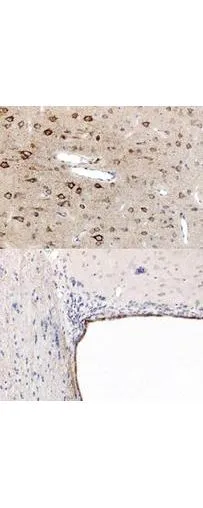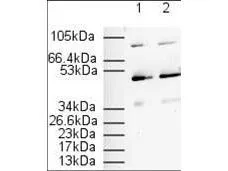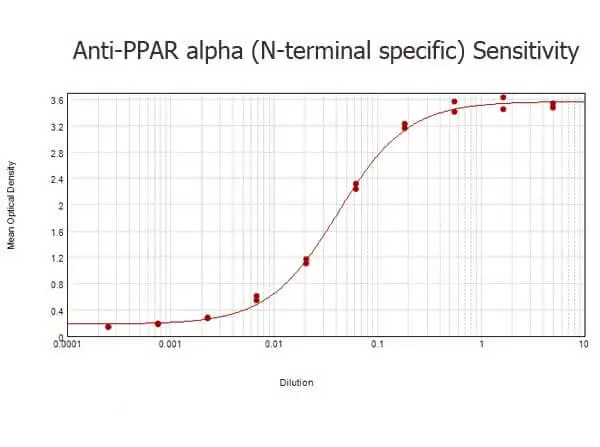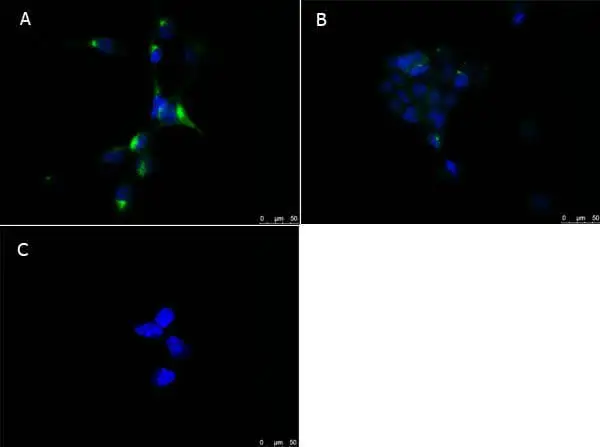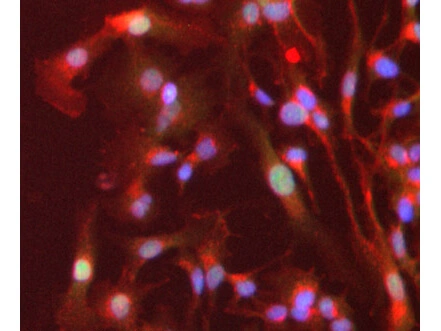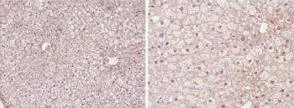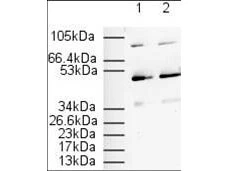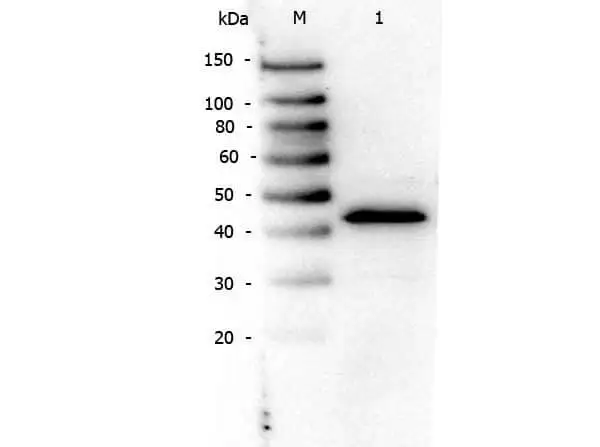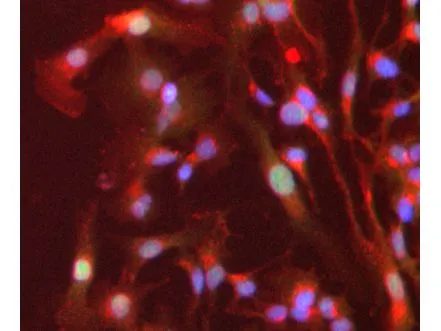
Immunofluorescence Microscopy of Rabbit anti-PPAR alpha antibody (GTX28934). Tissue: HepG2 cells. Fixation: 4% formaldehyde fixed (10 min). Antigen retrieval: not required. Primary antibody: PPAR alpha antibody at 1 microg/mL overnight at 4oC. Secondary antibody: Alexa FluorR 488 goat anti-rabbit IgG (H+L) (green) used at a 1:1000, Alexa FluorR 594 WGA was used to label plasma membranes (red) at a 1:200 dilution for 1h for 45 min at RT. Localization: PPAR alpha is nuclear and occasionally cytoplasmic. Staining: PPAR alpha as green fluorescent signal with DAPI (blue) nuclear counterstain.
PPAR alpha antibody
GTX28934
ApplicationsFlow Cytometry, ImmunoFluorescence, Western Blot, ChIP Chromatin ImmunoPrecipitation, ELISA, ImmunoCytoChemistry, ImmunoHistoChemistry, ImmunoHistoChemistry Paraffin
Product group Antibodies
ReactivityHuman, Mouse, Rat
TargetPpara
Overview
- SupplierGeneTex
- Product NamePPAR alpha antibody
- Delivery Days Customer9
- Application Supplier NoteWB: 1:500-1:2000. ICC/IF: 1-5 microg/mL. IHC-P: 1:100-:300. ELISA: 1:75000-1:125000. *Optimal dilutions/concentrations should be determined by the researcher.Not tested in other applications.
- ApplicationsFlow Cytometry, ImmunoFluorescence, Western Blot, ChIP Chromatin ImmunoPrecipitation, ELISA, ImmunoCytoChemistry, ImmunoHistoChemistry, ImmunoHistoChemistry Paraffin
- CertificationResearch Use Only
- ClonalityPolyclonal
- Concentration1 mg/ml
- ConjugateUnconjugated
- Gene ID19013
- Target namePpara
- Target descriptionperoxisome proliferator activated receptor alpha
- Target synonyms4933429D07Rik; AW742785; Nr1; Nr1c1; nuclear receptor subfamily 1 group C member 1; P; peroxisome proliferator-activated receptor alpha; PP; Ppar; PPARalpha; PPAR-alpha
- HostRabbit
- IsotypeIgG
- Protein IDP23204
- Protein NamePeroxisome proliferator-activated receptor alpha
- Scientific DescriptionThe Peroxisome Proliferator-Activated Receptors (PPARs) are members of the nuclear hormone receptor subfamily of transcription factors. PPARs form heterodimers with retinoid X receptors (RXRs) and these heterodimers regulate transcription of various genes.
- ReactivityHuman, Mouse, Rat
- Storage Instruction-20°C or -80°C,2°C to 8°C
- UNSPSC12352203
References
- Lipid Messenger Phosphatidylinositol-4,5-Bisphosphate Is Increased by Both PPARalpha Activators and Inhibitors: Relevance for Intestinal Cell Differentiation.Read more
- When Activator and Inhibitor of PPARalpha Do the Same: Consequence for Differentiation of Human Intestinal Cells. Cizkova K et al., 2021 Sep 17, BiomedicinesRead more
- A novel supplement with yeast beta-glucan, prebiotic, minerals and Silybum marianum synergistically modulates metabolic and inflammatory pathways and improves steatosis in obese mice. Nehmi VA et al., 2021 Sep, J Integr MedRead more
- Yulink, predicted from evolutionary analysis, is involved in cardiac function. Kuo MW et al., 2021 Jan 11, J Biomed SciRead more
- Expression of cytochrome P450 epoxygenases and soluble epoxide hydrolase is regulated by hypolipidemic drugs in dose-dependent manner. Cizkova K, 2018 Sep 15, Toxicol Appl PharmacolRead more
- Effect of monomeric adiponectin on cardiac function and perfusion in anesthetized pig. Grossini E et al., 2014 Jul, J EndocrinolRead more


